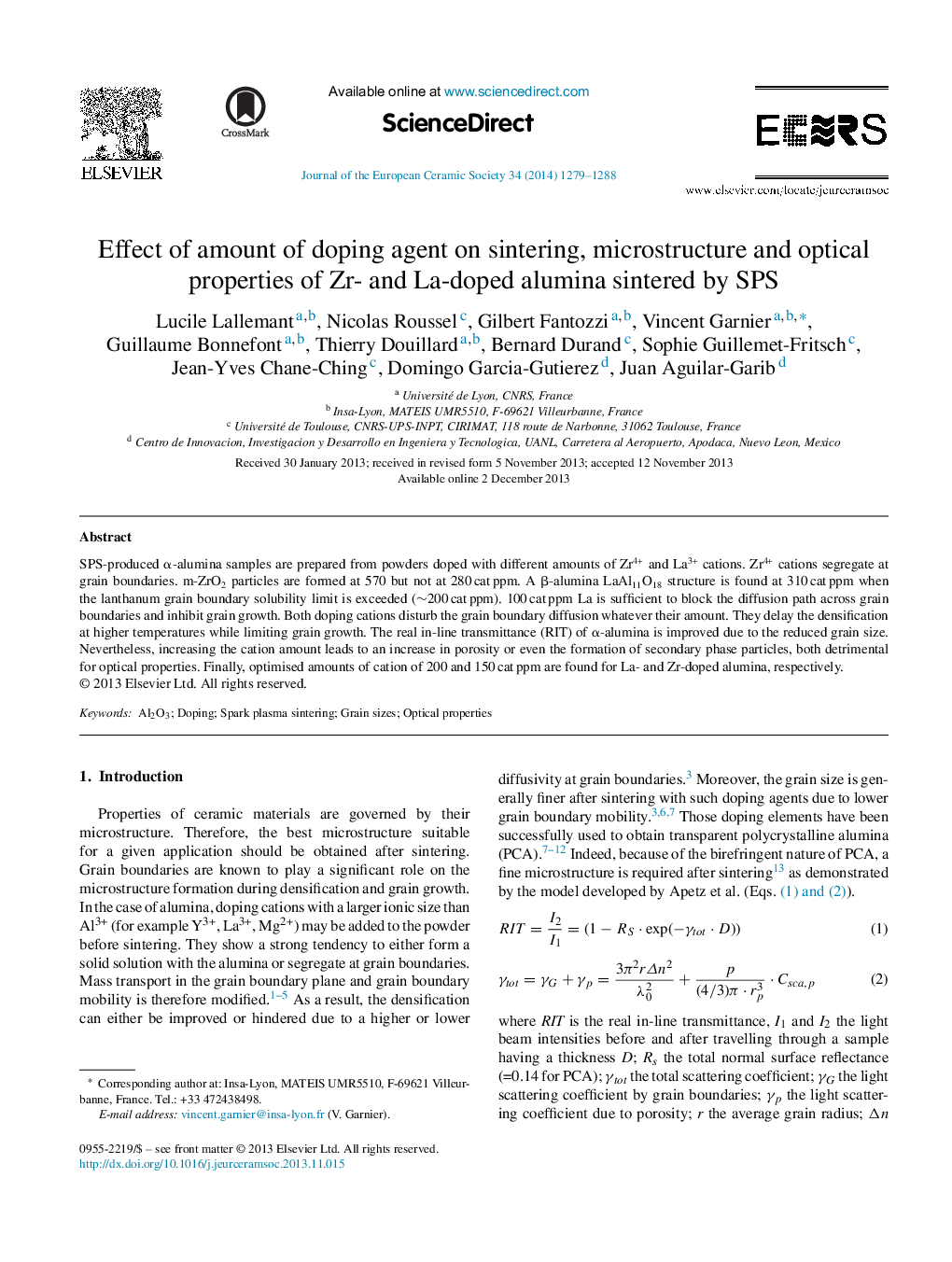| Article ID | Journal | Published Year | Pages | File Type |
|---|---|---|---|---|
| 1474401 | Journal of the European Ceramic Society | 2014 | 10 Pages |
SPS-produced α-alumina samples are prepared from powders doped with different amounts of Zr4+ and La3+ cations. Zr4+ cations segregate at grain boundaries. m-ZrO2 particles are formed at 570 but not at 280 cat ppm. A β-alumina LaAl11O18 structure is found at 310 cat ppm when the lanthanum grain boundary solubility limit is exceeded (∼200 cat ppm). 100 cat ppm La is sufficient to block the diffusion path across grain boundaries and inhibit grain growth. Both doping cations disturb the grain boundary diffusion whatever their amount. They delay the densification at higher temperatures while limiting grain growth. The real in-line transmittance (RIT) of α-alumina is improved due to the reduced grain size. Nevertheless, increasing the cation amount leads to an increase in porosity or even the formation of secondary phase particles, both detrimental for optical properties. Finally, optimised amounts of cation of 200 and 150 cat ppm are found for La- and Zr-doped alumina, respectively.
